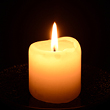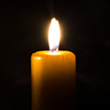ROBERT DOE- recognised as the third most successful fighter pilot of the Second World War - died in Kent at the age of 89 on 22 February, 2010.
In 1940 he was awarded the Distinguished Flying Cross "for his outstanding dash and an eagerness to engage the enemy at close quarters", to which was added a bar after he was shot down over Dorset later the same year.
He was also awarded the Distinguished Service Order for his inspirational leadership during service in India - being one of only two men to be awarded this.
Known as Bob, he was recognised as an "Ace" after winning five air battles in his first week of fighting in August 1940.
Born in Reigate, Surrey, in 1920, Robert Francis Thomas Doe was not immediately marked out as a future war hero.
The son of a head gardener, he was a painfully shy child. He left school at 14 and worked as an office boy at the News of the World.
But in 1938 he joined the Royal Air Force Volunteer Reserve, where he began his pilot's training at a non-military flying school.
A year later he gained a short service commission and joined the RAF proper. After completing his flying training, Mr Doe was posted to 234 (Spitfire) Squadron and into the heat of the Battle of Britain.
His successful career as a brave air fighter was not without misadventure, After being shot down in October 1940 he recovered quckly and was flying again in December of that year.
But in January 1941 he suffered severe facial injuries in a forced landing and New Zealand-born plastic surgeon Sir Harold Gillies performed 22 lengthy operations on his face. This surgery earned him his place as a member of the Guinea Pig Club - for patients of this new surgical technique.
He resumed flying just four months later.
In 1950, Mr Doe ended up in Egypt commanding No 32 Squadron and flying jets.
He returned to Britain to become a senior instructor at Fighter Gunnery Wing and put in for early retirement in 1966.
Once out of the military, Mr Doe settled in Kent to run his own garage and self-drive car hire firm.
He did write about his wartime experiences in Bob Doe, Fighter Pilot, published in 1989.
He was survived by his wife of 42 years, Betty, five children and three stepchildren.
Keep me informed of updates




